Accepted Scientific Name: Mammillaria solisioides Backeb.
Cactus (Paris) No. 31, Suppl.,. 3 (1952); cf. Gray Herb. Card Cat.

Mammillaria pectinifera f. solisioides (Mammillaria solisioides) Photo by: Valentino Vallicelli
Origin and Habitat: Oaxaca and Puebla, Mexico. Altitude 1.300 - 1.400 m. From either side of the state-line between Puebla and Oaxaca (Petlalzingo and Salitrillo in the state of Puebla and Huahuapan de Leon in the state of Oaxaca) The species is locally surprisingly common.
Habitat: Grows under bushes and other vegetation on alkaline soils with relatively high surface stoniness and high water retention capacity. The climate is semi-dry, hot, with summer rains and slight temperature oscillations.
Synonyms:
Common Names include:
RUSSIAN (Русский): Маммиллярия солисиевидная
SPANISH (Español): Pitayta
Description: Plants usually solitary, occasionally forming small clumps.
Stems: Spherical to depressed cylindrical, 2 - 4 (-8) cm high and in diameter. Without latex.
Axil: Naked
Radial spines: ± 25, flexible, chalky or dirty white, pectinately arranged and flattened against the stem surface, to 5 mm long.
Central spines: Not present.
Flowesr: Yellow to yellowish white, to 14 (-25) mm long.
Fruits: Greenish, half-retained within the plant, barely protuding above the spines.
Subspecies, varieties, forms and cultivars of plants belonging to the Mammillaria pectinifera group
 Mammillaria pectinifera F.A.C.Weber in Bois: It is a small cactus that in habitat appears above the ground as a squat stem. Spines: 20-40, pectinate, flattened against the body, fine, numerous, white, 1.5 - 2 mm long. Lacking central spines. Distribution: Puebla.
Mammillaria pectinifera F.A.C.Weber in Bois: It is a small cactus that in habitat appears above the ground as a squat stem. Spines: 20-40, pectinate, flattened against the body, fine, numerous, white, 1.5 - 2 mm long. Lacking central spines. Distribution: Puebla. Mammillaria pectinifera f. albiflora hort.: has white flowers. Garden origin.
Mammillaria pectinifera f. albiflora hort.: has white flowers. Garden origin. Mammillaria pectinifera f. cristata hort.: crested form. This plant has different crested forms, some very thin and other wide and strong.
Mammillaria pectinifera f. cristata hort.: crested form. This plant has different crested forms, some very thin and other wide and strong. Mammillaria pectinifera f. monstruosa hort.: has apparentely spineless, creamy-white, extremely elongated areoles, but if you look carefully, they are formed by extremely, short bristle-like spines that give the areoles their characteristic felty appearance.
Mammillaria pectinifera f. monstruosa hort.: has apparentely spineless, creamy-white, extremely elongated areoles, but if you look carefully, they are formed by extremely, short bristle-like spines that give the areoles their characteristic felty appearance. Mammillaria solisioides Backeb.: has only 25, flexible, chalky or dirty white, less pectinately arranged than the type and flattened against the stem surface, to 5 mm long. Central spines: Not present. Distribution: Oaxaca and Puebla.
Mammillaria solisioides Backeb.: has only 25, flexible, chalky or dirty white, less pectinately arranged than the type and flattened against the stem surface, to 5 mm long. Central spines: Not present. Distribution: Oaxaca and Puebla.
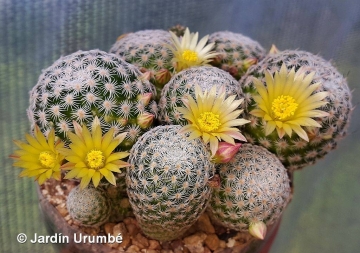 Mammillaria pectinifera f. solisioides (Mammillaria solisioides) Photo by: Alexander Arzberger
Mammillaria pectinifera f. solisioides (Mammillaria solisioides) Photo by: Alexander Arzberger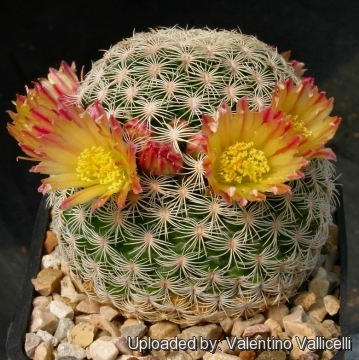 Mammillaria pectinifera f. solisioides (Mammillaria solisioides) Photo by: Valentino Vallicelli
Mammillaria pectinifera f. solisioides (Mammillaria solisioides) Photo by: Valentino Vallicelli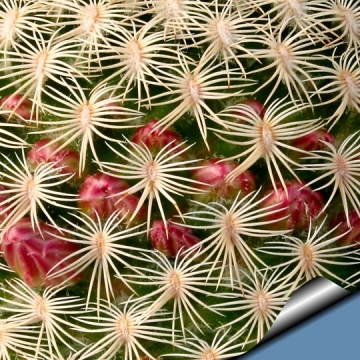 The characteristic innocuous spines. (Mammillaria solisioides) Photo by: Cactus Art
The characteristic innocuous spines. (Mammillaria solisioides) Photo by: Cactus Art Mammillaria pectinifera f. solisioides (Mammillaria solisioides) Photo by: Valentino Vallicelli
Mammillaria pectinifera f. solisioides (Mammillaria solisioides) Photo by: Valentino Vallicelli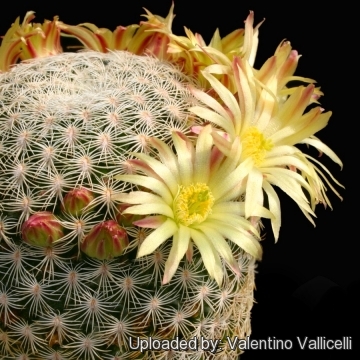 Mammillaria pectinifera f. solisioides (Mammillaria solisioides) Photo by: Valentino Vallicelli
Mammillaria pectinifera f. solisioides (Mammillaria solisioides) Photo by: Valentino Vallicelli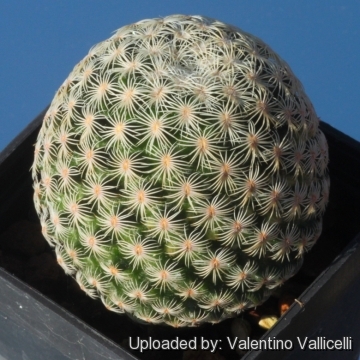 Mammillaria pectinifera f. solisioides (Mammillaria solisioides) Photo by: Valentino Vallicelli
Mammillaria pectinifera f. solisioides (Mammillaria solisioides) Photo by: Valentino Vallicelli Mammillaria pectinifera f. solisioides (Mammillaria solisioides) Photo by: Cactus Art
Mammillaria pectinifera f. solisioides (Mammillaria solisioides) Photo by: Cactus Art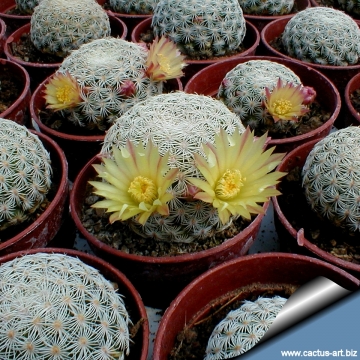 Mammillaria pectinifera f. solisioides (Mammillaria solisioides) Photo by: Cactus Art
Mammillaria pectinifera f. solisioides (Mammillaria solisioides) Photo by: Cactus ArtCultivation and Propagation: Slow growing, this plant is very rot prone and temperamental when cultivated on its own roots, but it is easy to grow if grafted. Mammillaria solisioidesSN|13948]]SN|13948]] has a fairly large tap root, and should be kept in a deep pot with a very draining mineral substrate. Watering during the active growing season (spring and summer), this will encourage steady growth. But be careful with watering, which all thick rooted species require (rot sensitive). Keep dry during the winter rest. Fertilize every 2 weeks with diluted high potassium fertilizer when the plant is in bud. Light shade or full sun exposures.
Propagation: Direct sow after last frost. (seldom produces offsets)
Your Photos
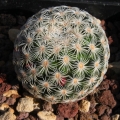
by Valentino Vallicelli




















